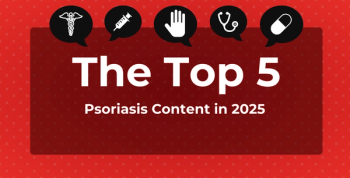
Drivers of Patient Experience in Medicaid Managed Care
Though they may not directly provide patient care for their members, managed care organizations (MCOs) play a substantial role in the patient experience of millions of Medicaid enrollees.
The Scope of Medicaid Managed Care
Perhaps somewhat counterintuitively, Medicaid managed care is big business, and the enactment of the Affordable Care Act (ACA) made it even more lucrative; in the last 5 years, health insurers skyrocketed up the rankings of the Fortune 500, generating billions in revenue by covering millions of newly eligible Medicaid beneficiaries. Of the 71.7 million Americans enrolled in Medicaid,
All but 2 states now offer some form of Medicaid managed care plans, spurring a healthy competition between MCOs and elevating the priority of patient experience and satisfaction for Medicaid enrollees.
Customer Satisfaction in the Health Insurance Industry
The health insurance industry as a whole performs relatively poorly on customer satisfaction ratings, and is consistently ranked in the bottom quartile of all industries studied by the American Consumer Satisfaction Index (ACSI). While customer satisfaction on the provider side of healthcare has been (unfavorably)
Chart: Insurance Customer Satisfaction by Industry3
Consumers find health insurance statements difficult to understand, and are particularly dissatisfied with the web-based and call center services offered by their plans. However, “the least satisfying aspect of health coverage is the range of available plans with differing levels of coverage, premiums, deductibles and copays, indicating that
The Business Case for Improving Patient Experience
Clearly, MCOs and other health insurers have room for improvement in patient satisfaction, and regulatory and consumer trends are creating even more compelling incentives for organizations to provide excellent customer service to Medicaid enrollees. For instance, patient satisfaction ratings help determine incentive payments under Medicare’s Hospital Value-Based Purchasing Program,5 and some MCOs expect similar incentive structures and contract award criteria to be implemented for Medicaid plans as value-based contracting extends to that program.
Further, studies show the
Provider-Focused Patent Experience Initiatives
In Medicaid managed care settings, the drivers of patient experience ratings of providers include:
- how well providers and staff communicate with patients
- timeliness of appointments, care and information; and
- patient-centered practices such as after-hours access, addressing social determinants of health and establishing personal health goals.7
MCOs can address these provider-side drivers of patient experience by offering patient-centered provider training; developing actionable, provider-specific data and offering providers metric-aligned performance incentives.
Patient-Centered Provider Training
Provider training is essential to the success of any patient experience endeavor, and is particularly important when providers join Medicaid managed care networks for the first time and may not intuitively understand the complex factors affecting the health of enrollee populations. For instance,
According to L.A. Care CEO John Baackes, focusing on patient satisfaction isn’t just the right thing to do—it’s a business imperative. When ACA provisions expanded Medicaid eligibility, the plan welcomed hundreds of thousands of new members. In order to quickly enhance its provider network without sacrificing customer satisfaction, L.A. Care made a strategic and enduring commitment to ensure each provider is properly trained and equipped to meet the specific needs of the plan’s diverse patient populations. In 2015, L.A. Care Health Plan offered more than 50 practice-based continuing medical education opportunities to help its network of providers stay on the cutting edge of population health management.
For-profit MCOs face the same challenges as publicly operated plans when it comes to maintaining high patient satisfaction while expanding provider networks to meet demand. For example,
Actionable, Provider-Specific Patient Satisfaction Data
To develop viable patient experience improvement initiatives, MCO leaders need timely, provider-specific patient satisfaction data, and many have developed new methodologies to obtain it. For example, Molina Healthcare has implemented an internal provider scorecard based in part on a proprietary post-appointment survey enrollees can complete through an online member portal. Survey questions are designed to approximate broader quality and performance standards such as those measured by the Healthcare Effectiveness Data and Information Set (HEDIS) produced by NCQA and the Consumer Assessment of Healthcare Providers and Systems (CAHPS) survey administered by the US Agency for Healthcare Research and Quality.
According to Syiek, the information from these internal surveys is analyzed and shared with the provider to collaboratively identify specific opportunities for improvement. In addition, larger providers in Molina’s network may have adequate sample sizes to receive external scorecards based on their patients’ responses to CAHPS questionnaires. Syiek says the combination of these internal and external patient satisfaction metrics offer a realistic indication of how each provider in Molina’s networks is viewed by enrollees.
L.A. Care Health Plan also implemented an internal system for evaluating patient satisfaction across its network of 28 independent practice associations (IPAs). By gathering CAHPS survey results, HEDIS measures and access and availability metrics, then combining those with internal measures on utilization and timeliness of data submission, L.A. Care has instituted a provider rating system that Baackes says is nothing short of groundbreaking. The ratings are not consumer-oriented, and are issued to L.A. Care’s 28 participating IPAs as a ranked list from first to 28th. The list is blinded, meaning each IPA can see the percentile and rank it attained on each measure but the other 27 provider organizations are anonymized.
“We’re not just doing it for the scores,” Baackes explained. “To improve the scores, they’ll have to take actions that improve their patient services and outcomes.” Baackes and his team hope the program helps providers in L.A. Care’s network “focus their resources to move the needle significantly on a few discrete items,” using these specific, actionable data sets as a road map.
Metric-Aligned Provider Incentives (Pay for Performance)
Many MCOs offer pay for performance (P4P) to providers that reach certain goals. However, thanks to their investments to obtain actionable, provider-specific data, both L.A. Care Health Plan and Molina Healthcare have been able to establish P4P incentives that effectively reinforce the strategic goal of improving patient experience. Throughout Molina’s many plans, Syiek explains, provider engagement teams work collaboratively with strategic providers to encourage the mutually beneficial outcomes that lead to more performance incentives. Molina’s P4P incentives are aligned with HEDIS metrics, and are designed to drive overall quality measures, which correlate with higher patient satisfaction.8
Molina has also instituted shared savings programs as an additional incentive for some of its larger providers. Said Syiek, “The gateway to savings is achievement on quality measures. We view quality as the basis for all value-based reimbursement. The providers who gravitate to P4P are the ones that have gotten there to set themselves apart from other competitors. Quality is what makes them different, as well as what makes us different.”
Syiek and her team have found that by offering these incentives, providers quickly realize improving quality and patient experience makes them a more advance and competitive practice, not only with Medicaid and Medicare members, but with commercial health insurance customers as well. Other insurers have also developed customized
Member-Focused Patient Experience Initiatives
Patient experience ratings of health plans and MCOs share some of the key drivers of patient experience by providers, and include:
- wellness-based service offerings3
- ease of getting care and appointments as soon as needed
- how well doctors communicate with patients; and
- the helpfulness of the health plan’s website, call center and customer service personnel.7
MCOs can leverage these member-side drivers of patient experience by focusing on patient education and engagement and offering meaningful and intuitive self-help options.
Patient Education and Engagement
Studies demonstrate patient education can minimize many of the variable overhead costs of a plan’s member services, such as the volume of complaint investigations, telephone contacts, claims appeals, adjustments and outstanding medical debts.6 As an additional bonus,
New member engagement also presents opportunities to build trust and reduce systemic costs for MCOs. For instance, an easy to understand on-boarding process is particularly critical for those newly eligible for Medicaid who may previously have been uninsured.
“Simply giving them a card to put in their wallets doesn’t help them understand how to utilize their care options,” said Baackes.
During orientation, first-time insurance customers who may have relied on hospital emergency departments learn about the conditions their new primary care providers will manage, as well as how to take advantage of L.A. Care’s wellness programs and family resource centers. These programs not only reduce costs for L.A. Care and its providers, but also support the proper utilization of the healthcare system as a whole.
Self-Help Member Services
Offering members self-help options can minimize reliance on more costly contact methods, and can substantially reduce administrative costs while improving member satisfaction.10 In addition to routine account services, L.A. Care Health Plan’s online member portal offers enrollees a robust health and wellness library. Baackes says utilization of the online platform is growing; however, relatively few of L.A. Care’s enrollees currently use mobile devices to access services.
Molina Healthcare offers a feature-rich online member portal, as well as a mobile application version available to enrollees in certain states. While Medicaid beneficiaries may currently have limited access to mobile devices, MCOs should prepare for the inevitable ubiquitous adoption of mobile technology and develop applications that add value for mobile health plan enrollees and prospects. This doesn’t necessarily require a large investment; reports demonstrate some health plans have seen a positive return on mobile platform investment simply by
Conclusion
Both publicly operated and for-profit MCOs share many of the same values when it comes to patient experience and customer service. For Baackes, “It comes down to this: how do you want to be treated? That’s how we should treat our members.”
Similarly, Syiek describes customer service as an integral part of Molina’s brand. As a family-operated company whose slogan is “We treat you like family,” Syiek said Molina’s culture is built around providing a member experience that lives up to that ideal.
Although Medicaid MCOs may not directly deliver patient care, their impact on the healthcare experiences of their members is enormous. In anticipation of new value-based purchasing paradigms in the Medicaid space, MCOs are making strategic investments to leverage the drivers of patient experience. As MCO health plans become increasingly consumer-driven and patient-centered, the Medicaid managed care segment has the potential to rewrite the industry’s history of poor customer service—or at least become as satisfying as life insurance.
References
1. CMS. (2016). Medicaid Managed Care Enrollment and Program Characteristics, 2014 (Rep.). Retrieved November 10, 2016, from
2. Blake, Jeffrey. (2016, May 13). Applying restaurant customer service principles to healthcare. Becker's Hospital Review website. Retrieved November 1, 2016, from
3. American Consumer Satisfaction Index. (2016). ACSI Finance and Insurance Report 2016 (Rep.). Retrieved November 16, 2016, from
4. UnitedHealthcare. (September 2016). UnitedHealthcare Consumer Sentiment Survey 2016 Results Executive Summary (Rep.). Retrieved November 9, 2016,
5. Centers for Medicare and Medicaid Services. (September 2015). Hospital Value-Based Purchasing (Rep.). Retrieved November 10, 2016, from
6. McGlone, Pamela. (2016, 12 April). Simple Ways to Improve the Patient Experience — Are You Leaving Opportunity on the Table? Retrieved October 03, 2016, from Expert Global Solutions, Inc., an Alorica company:
7. Agency for Healthcare Research and Quality. (2016, September). Learn About the Clinician & Group Survey. Retrieved October 10, 2016, from
8. National Committee for Quality Assurance. (2016). Health Insurance Plan Ratings 2016-2017 — Summary Report (Medicaid). (Rep.). Retrieved November 17, 2016, from
9. Herman, Bob. (2016, 17 September). What insurers are doing to fix their rep for awful customer service. ModernHealthcare website. Retrieved September 20, 2016, from
10. A.T. Kearney, Inc. (2011). Health Insurers: The Customer Engagement Imperative. (Rep.). Retrieved October 04, 2016, from
11. Plumb, M., Balachandran, M. & Kaufman, A. (2012, January). Mobile technology enhances health plan member engagement (Rep.). Retrieved September 20, 2016, from
Newsletter
Stay ahead of policy, cost, and value—subscribe to AJMC for expert insights at the intersection of clinical care and health economics.








































